Eighth in a series about the Inca Trail
In 2006, during the last days of Kodak High Speed Infrared 35 mm film, I experimented with a few rolls. I loved the striking contrast, the sharpness in hazy landscapes, the glowing foliage. Even before Kodak discontinued the film, I took the plunge and invested in a digital camera converted to shoot near infrared. It’s been a regular part of my travels ever since. There are significant limitations to the medium and usually only about 10% of my photos on any given trip are IR.
While packing to hike the Inca Trail, I debated whether to bring the infrared camera, given the extra weight. Since my Cotton Carrier vest only had room for a single camera, the infrared camera would spend most of the time in my backpack. Still, on a well traveled circuit like the Inca Trail, it’s hard to accomplish anything photographically that hasn’t already been done before. I’d never seen any infrared photos of Machu Picchu, either, so I decided to lug it along, eager to see what would turn out. I pulled it out a few times during the hike when we stopped for a few minutes at major sites or for lunch breaks. On the grueling Day Two, I didn’t pull the camera out at all.
Different foliage types reflect different amounts of infrared light. I’ve found that deciduous trees of the East Coast of North America “glow” quite well in infrared, while pine forests of the West Coast do not. With some exceptions, I found most trees along the Inca Trail did not reflect particularly strongly, although the grasses that grew around ruins did. I also managed to shoot a few infrared shots when sun and clouds created interesting plays of light on the mountains flanking the trail.
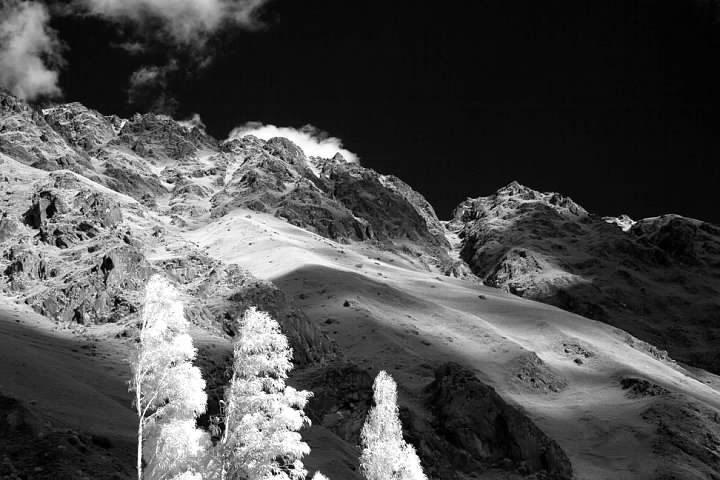
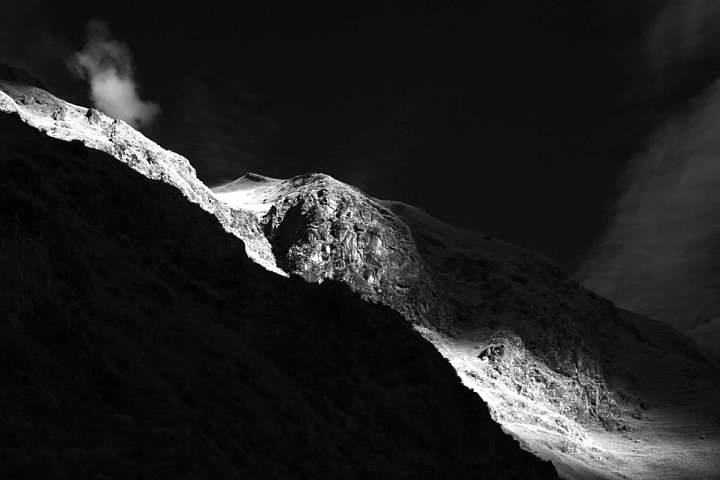
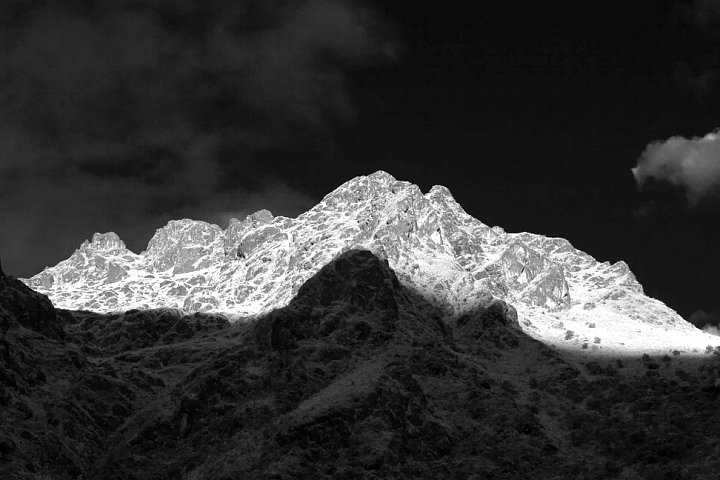
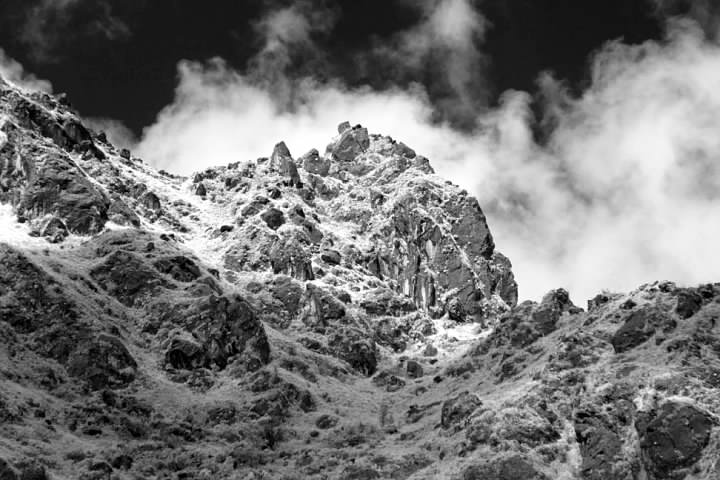
One of the strength of infrared is its high contrast. In some parts of the world, I’ve found infrared makes buildings stand out quite strongly from surrounding foliage, framing the midtone building subject against bright surroundings (since foliage reflects more infrared). I usually withhold posting what I consider my weaker images. However, I hope that a discussion of the difficulties I found using infrared may be interesting to fellow photographers. At times I will discuss why I think an image didn’t “work” in infrared.
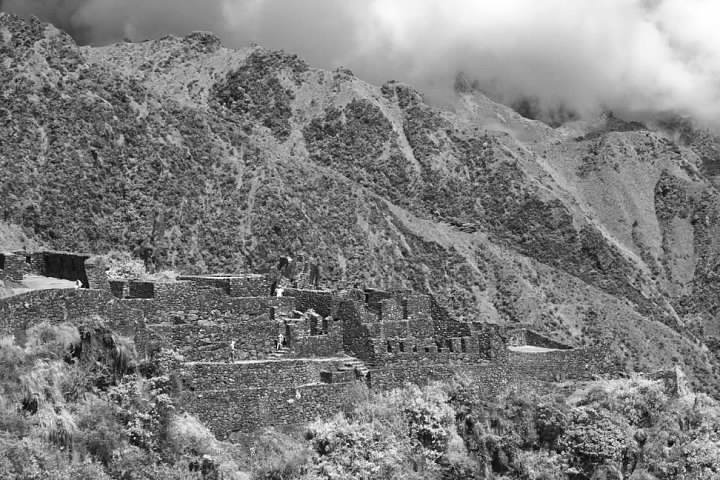
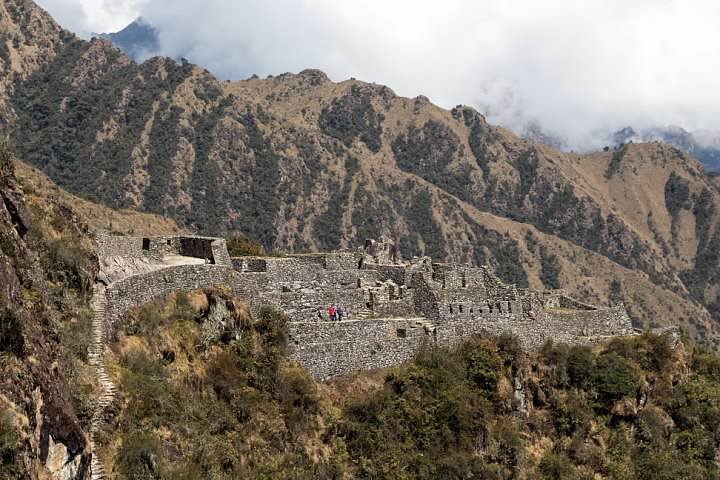
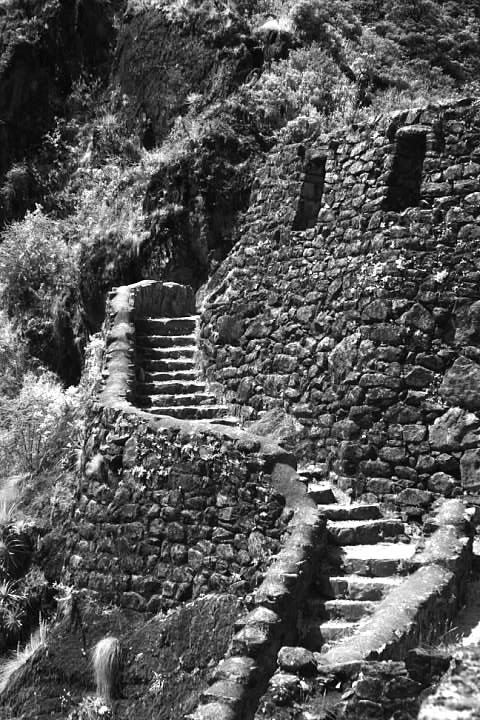
Part of the challenge (and, I suppose, the fun) of shooting infrared is having to predict what sort of subjects will look good in infrared. In familiar territory, I have a good idea how foliage and buildings will end up looking in infrared. The varied terrain of the Inca Trail was something new.
In general, I found that Incan stonework reflected infrared light at a similar level to the surrounding foliage. As a result, many of the infrared images had low contrast compared to their color equivalents. There were a few exceptions. Some of my best infrared images from the trail were photos taken from higher angles where subjects were casting enough of a shadow to generate strong contrast (shadowy areas reflect virtually no infrared light). Also, there was good IR reflectivity from the grass growing around the ruins.
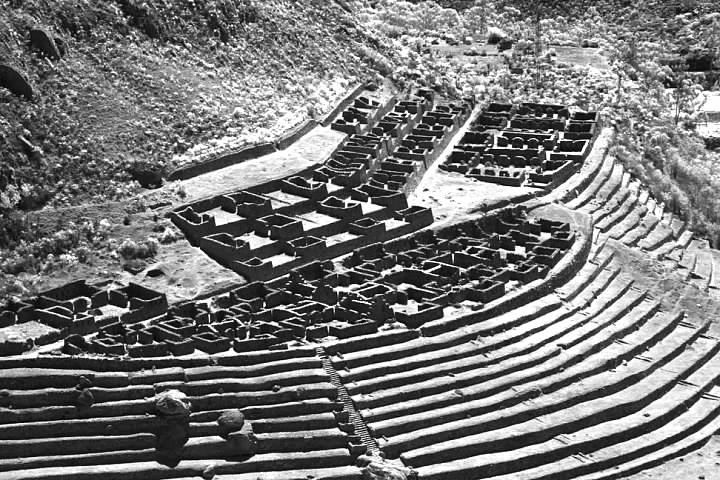
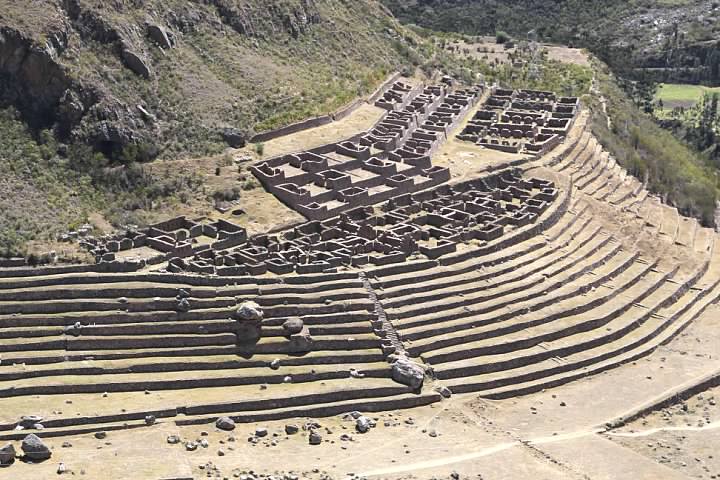
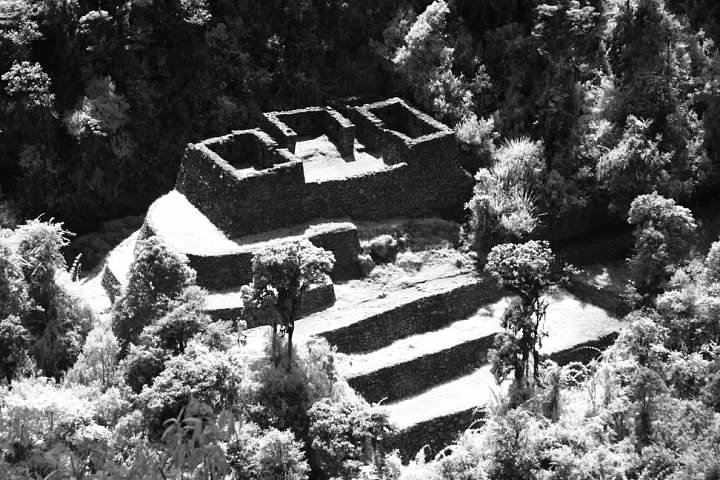

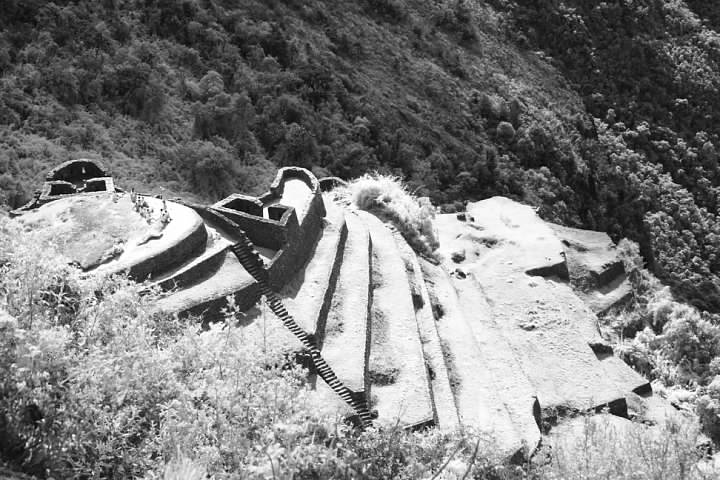
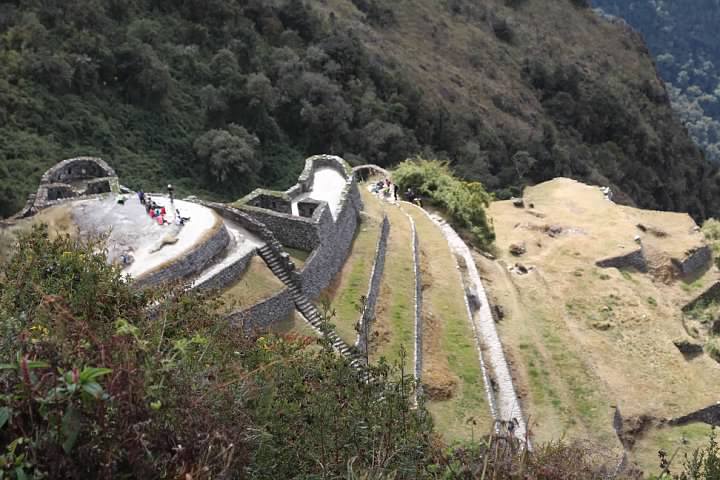
Perhaps there’s a reason I’ve never seen any infrared photos of Machu Picchu…as it turns out, it just doesn’t look all that great in infrared, at least under most circumstances. My photograph of Machu Picchu taken from the Sun Gate was perhaps my biggest disappointment, because the city details simply didn’t stand out from the surrounding mountainside at all in IR.

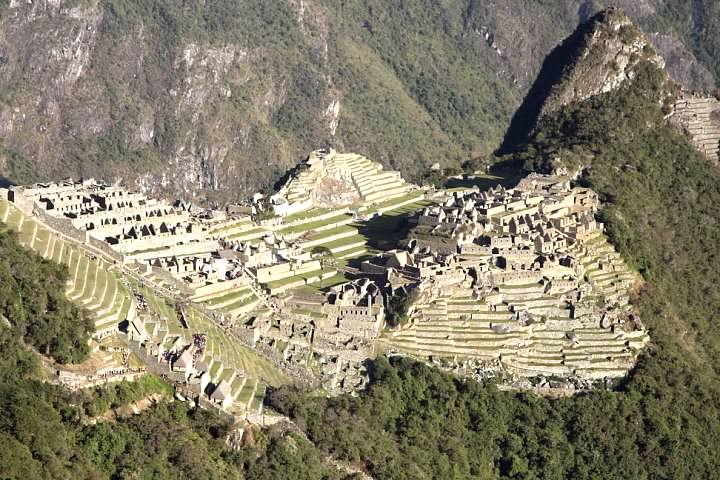
Once I descended to the main city of Machu Picchu, I found the infrared images similarly disappointing. Some weren’t exactly bad, but weren’t exceptional either…and Machu Picchu is just about as photogenic a place as they come.

I did have one success. There was a tree amid the ruins that was displaying good infrared reflectivity. As I toured the ruins, I kept an eye out for an opportunity to use it in a compelling image. In Machupicchu in Inka History, Cosme Cuba Gutiérrez refers to it as a “pisonay (Erythrina falcate).”
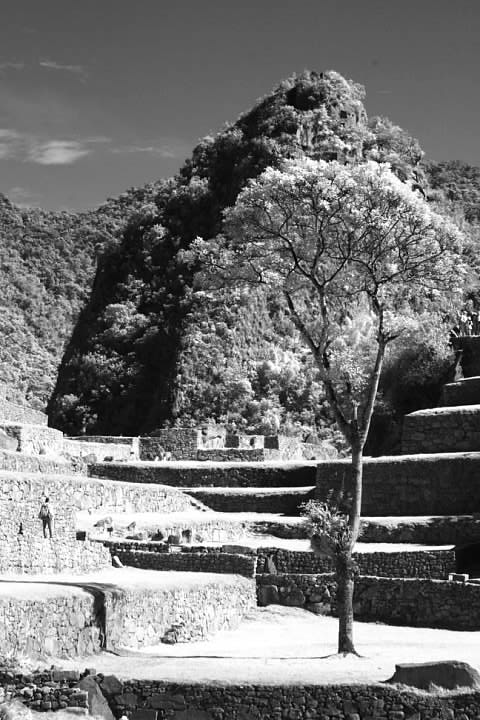
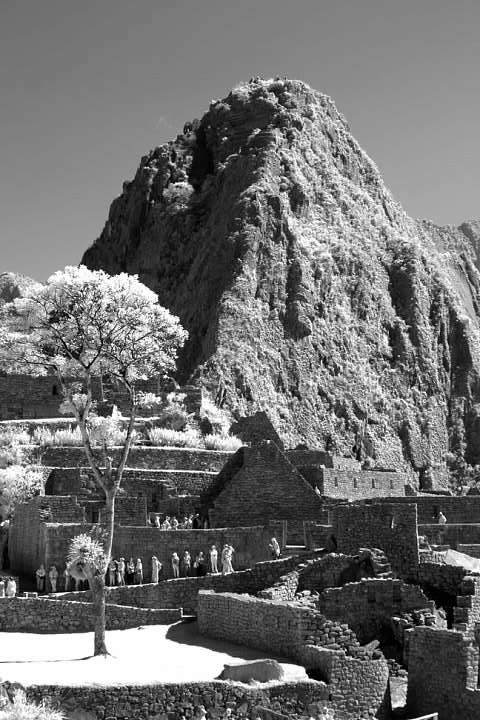
Eventually, I found a spot where the tree was in full sun against a shadowy backdrop of one of the mountains to the northeast. Only the top of the tree was visible. In color, the picture was nothing special:
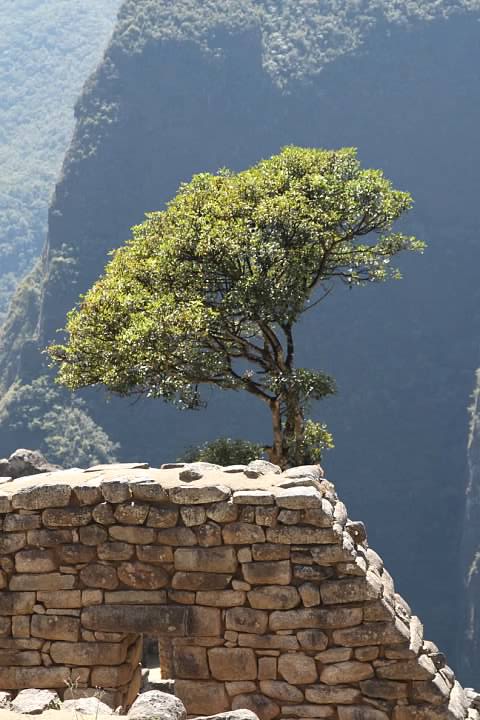
In infrared, however, the image is striking, even straight out of the camera:
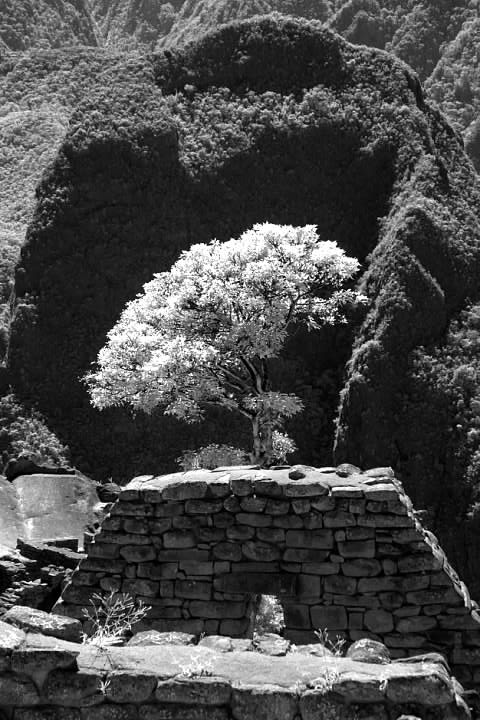
Series on the Inca Trail (Camino Inka)
Planning a Trip to Bolivia and Peru (background)
Introduction (Cusco to Ollantaytambo by Bus)
Day One (Piscacucho to Wayllabamba)
12 km (7.5 mi) distance, +300 m (984 ft) elevation
Day Two (Wayllabamba to Pacamayo)
11 km (6.8 mi) distance, +1,200 m (3,937 ft)/-600 m (1,969 ft) elevation
Day Three (Part I, Pacamayo to Qunchamarka AND Part II, Chaquicocha to Wiñay Wayna)
15 km (9.3 mi) distance, +350 m (1,148 ft)/-1,300 m (4,265 ft) elevation
Day Four (Wiñay Wayna to Machu Picchu)
5 km (3.1 mi) distance, +40 m (131 ft)/-265 m (869 ft) elevation
Inca Trail’s End: Machu Picchu
The Inca Trail and Machu Picchu in Infrared

great job on these. I’m not particularly interested in photography but I really liked this post!
LikeLike